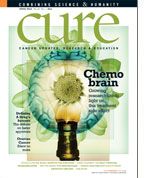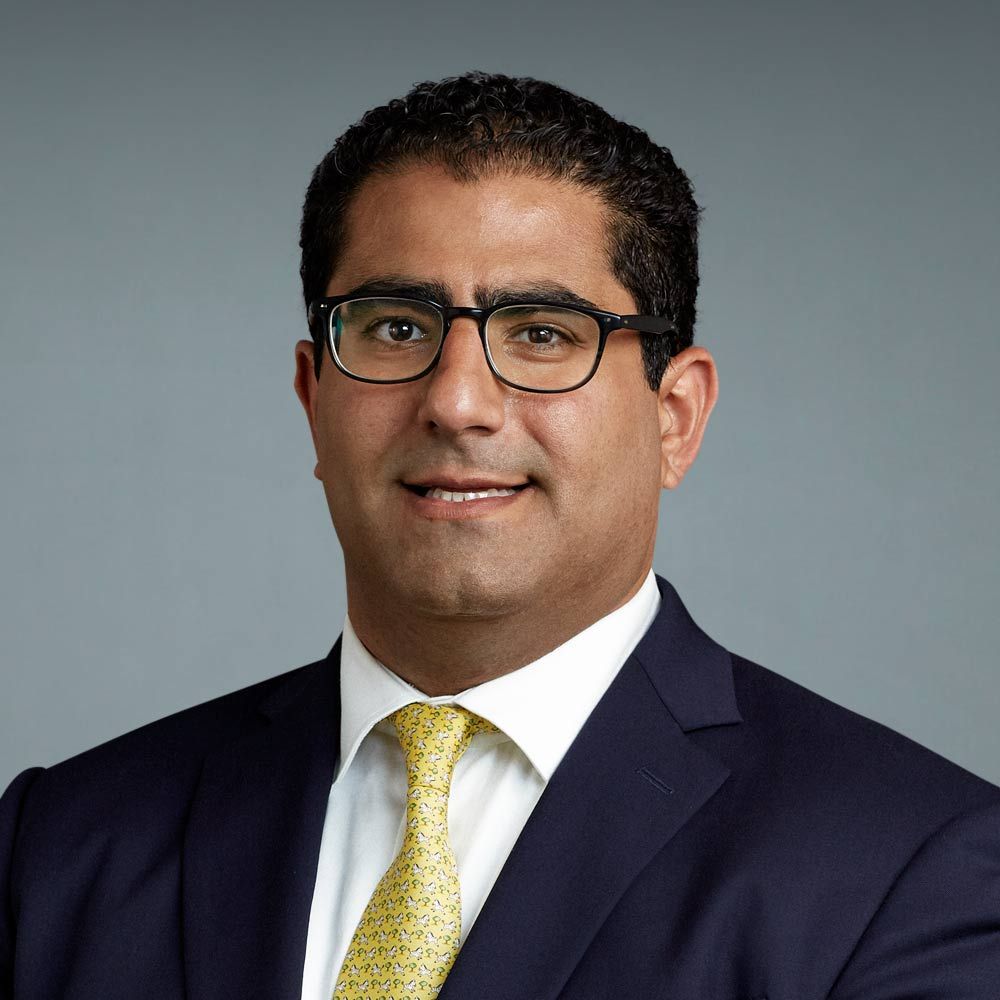Publication
Article
CURE
Hitting Hard-to-Treat Cancers
Author(s):
Hampered by lack of screening tools, science is taking aim at the most lethal forms of the disease.
As cancer cells go, they are the stealthiest.
They hide in tissue, unable to be detected by conventional screening. They hunker down seemingly dormant for years, and then, through some mysterious triggering process, start to grow and spread.
When their presence becomes painfully known, they often have already wreaked havoc on the surrounding tissue. And the final, most lethal straw: They possess unique molecular skills that can render useless the treatments that can be so effective on other forms of cancer.
Over the past 40 years, science has made remarkable progress in the detection and treatment of most major cancers, resulting in dramatically increased cure rates and long-term survival for patients diagnosed with well-known and widespread cancers, such as childhood leukemia, breast and prostate cancers.
But for some cancers—like the tumors that develop in the pancreas, liver and ovaries, or glioblastomas in the brain and melanomas that have burrowed beneath the skin—achieving that same kind of treatment success has remained largely out of reach. Because the prognosis of patients diagnosed with early-stage disease, such as those with breast cancer, is so encouraging, it is hard for those who have hard-to-treat cancers to understand why theirs is not.
For years the widely accepted reason these cancers seem so difficult to treat has been rather simple—we don’t catch them at an early enough stage to stop them. That remains the case today, although we are now uncovering other biological reasons for the more recalcitrant cancers. But there are new, hopeful treatments—especially in the area of targeted gene therapy—that could begin to swing long-term treatment success over to the side of the patient.
Unlike mammograms for breast cancer and colonoscopies for colorectal cancer, most of these cancers lack an effective screening tool to detect them early. For many patients, the first symptoms they experience are after the cancer has spread to other organs.
Ovarian cancer patients, for instance, usually don’t know they are sick until the disease has spread throughout the abdomen, resulting in pain from a bowel obstruction. Pancreatic cancer’s symptoms also tend to present in later stages. And by the time most glioblastomas in the brain are detected, the tumor is growing so rapidly it has already infiltrated regions of the organ that are vital to many of the body’s functions. Internal organs such as the lungs, pancreas and brain keep their secrets not only because of a lack of screening tests but also because the tumors are difficult to touch.
For years the widely accepted reason these cancers seem so difficult to treat has been rather simple—we don’t catch them at an early enough stage to stop them.
While the mortality rate for these cancers remains unacceptably high, in raw numbers the death toll from them is comparatively small. For instance, there are about 14,000 deaths a year in the U.S. from ovarian cancer compared with 40,000 for breast cancer; or 8,700 melanoma deaths to colorectal cancer’s 51,000. The incidence rate of these cancers is correspondingly low compared with the more common forms. Right or wrong, this lower incidence rate may have dampened research into screening tools and treatment methods for them.
A National Cancer Institute breakdown for how it spent $4.8 billion on research in 2007 shows that prostate cancer got nearly $300 million while pancreatic cancer received $73 million. Similarly, breast cancer received $572 million in funding that year compared to $97 million for ovarian cancer. The NCI stresses that there are funding overlaps in some cases and the figures do not represent its total research budget for specific cancers. Still, the disparities are obvious.
Pharmaceutical company-funded research into hard-to-treat cancers faces similar challenges. The process is made all the more complicated because of the time it takes to find enough patients and accumulate sufficient data on them to get through the rigorous testing demanded before new drugs are approved for use.
Otis W. Brawley, MD, chief medical officer of the American Cancer Society, worries at times about the “Disease Olympics”—the competition for funding that research generates. “You don’t get promoted at the university for trying and failing to find successful treatments for hard-to-treat diseases.”
We would try one drug, and it would fail. Then we would try another, and then we’d try a combination of drugs, and the results were not what we had hoped for. It was very frustrating.
But at the same time, he says, such comparisons can be overstated. It makes sense to aim research funding where it will have the most impact in preventing death and disability in large numbers of patients, he says. And it’s important to remember that unsuccessful treatments for one disease may one day be found to work wonders on another. (AZT, azidothymidine, was originally studied as a cancer treatment in the 1960s, Brawley points out. It is now a standard therapy for HIV.)
Jeffrey Sosman, MD, professor of medicine at Vanderbilt University and director of the melanoma and tumor immunotherapy program at Vanderbilt-Ingram Cancer Center, describes the discouraging path of treatment for many of his advanced-stage patients the way many clinicians working with hard-to-treat cancers have for years:
“We would try one drug, and it would fail. Then we would try another, and then we’d try a combination of drugs, and the results were not what we had hoped for. It was very frustrating.”
While reduction in mortality rates against these hard-to-treat cancers have not kept pace with other forms, that doesn’t mean there hasn’t been any progress.
Even with advanced-stage lung cancer, which kills more Americans than any other form, new developments in molecular science have opened the door to creating personalized treatment plans that attack some of the same specific targets in cancer cells that make other hard-to-treat forms of cancer so lethal. These targeted therapies remain mostly in the clinical trial stage—and it is much too early to draw conclusions about their long-term success—but the preliminary results have been encouraging and will help guide new areas of research.
With the discovery of genetic mutations in certain cancer cells, “we are seeing signs of progress” with targeted agents, Sosman says. The goal is to learn as much about the pathways melanoma cells use to replicate and target therapies to shut that process down.
Treatment aimed at BRAF mutant cells seen in a subset of melanoma tumors, for instance, is showing “pretty astonishing results,” he says. Every month brings more scientific results and more optimism.
“I would not have had much good to say to my patients a few years ago,” Sosman says. “I try not to give patients false hope, but there are some positive developments that we are watching closely.”
But he quickly adds, “We still can’t get around the fact that this is not a cure. At least we have gotten to first base on some of these particularly difficult forms of cancer.”
Glenn Mitchell of Kennesaw, Ga., has been battling lung cancer since it showed up on an X-ray in his left lung just before he underwent heart bypass surgery at the age of 53. Mitchell went through surgical resection of his lung shortly after his heart surgery nine years ago. For more than five years he showed no signs of recurrence.
But two years ago, a CT scan showed that the cancer was back. His oncologist referred him to Emory University’s Winship Cancer Institute in Atlanta, where Suresh S. Ramalingam, MD, was starting to enroll patients in a clinical trial to test crizotinib, an anaplastic lymphoma kinase inhibitor targeted to treat the ELM4-ALK translocation, a genetic mutation seen in a small fraction of non-small cell lung cancers.
We learn something from every patient we treat, and what we learn will help us do a better job of taking care of future patients.
During a clinic visit in late August, Ramalingam told Mitchell, 62, that the latest CT scan did not detect the tumor that was on his lung when he started taking the drug in April.
“We typically expect reduction in the tumors in the first few months of the trial,” Ramalingam says. “But I was surprised by the disappearance of the tumor altogether in this case.”
Still, physician and patient both know that cancer— especially lung cancer—can find ways to thwart many forms of therapy. Even with the newest agents the cancer often begins to develop resistance to the therapy within 10 to 12 months, Ramalingam says.
Finding agents that can interrupt the signals for replication sent out by the mutation of the KRAS gene, for instance, could lead to better outcomes for the 20 to 25 percent of lung cancer patients who have the defect, says Ramalingam, who describes such research as the “holy grail” for lung cancer success.
“We learn something from every patient we treat,” Ramalingam says. “And what we learn will help us do a better job of taking care of future patients.”






